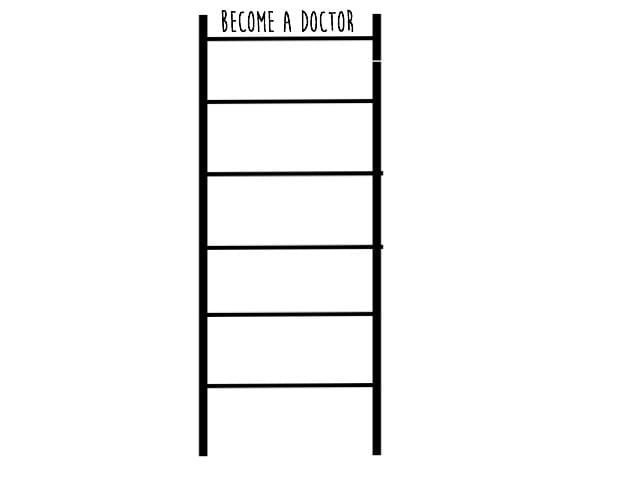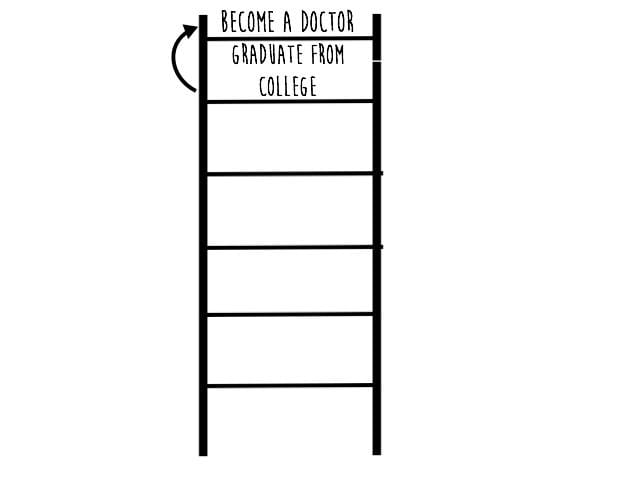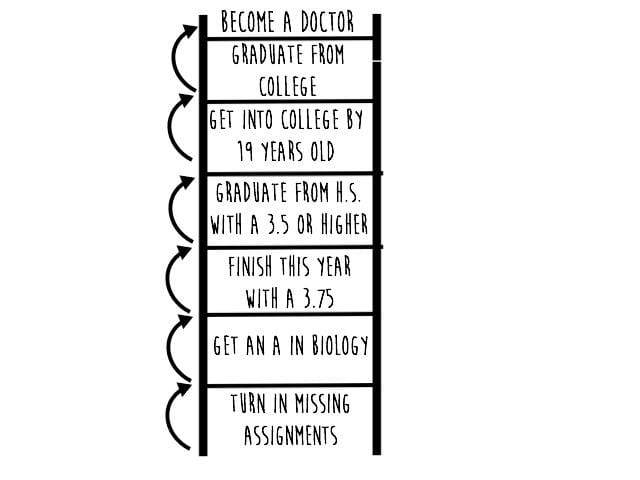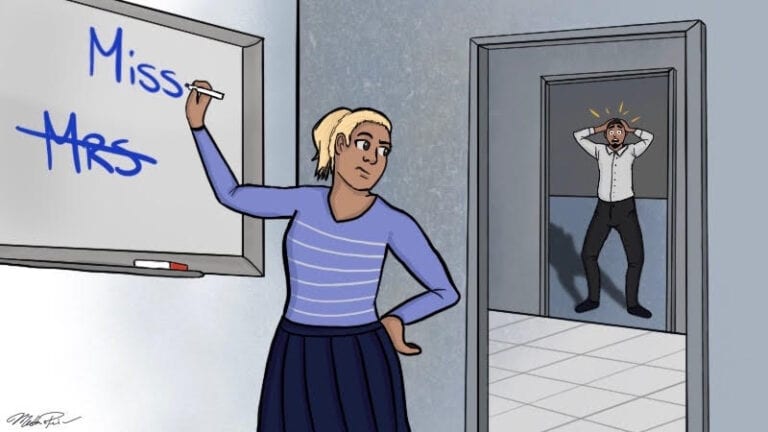This post is a part of the Thriving Learner Series from AffectiveLiving, aimed at helping students find purpose and happiness. File this one under Accomplishment Strategies.
I celebrate D-minuses. I celebrate class averages that are just barely above passing. Sometimes I even celebrate a kid just turning in a paper. Not because I have low standards. D-minus is not my end goal. A group of kids barely scraping by in their education is far from my definition of satisfactory teaching.
But I celebrate these things anyhow, because for many of my students, these “bare minimum” moments truly are feats of accomplishment. I celebrate them because they live in a world that seems only to acknowledge the Advanced Placements, the A-plusses, the accelerated track. And it is in this environment that many students simply give up because the end goals we set for them (and that they set for themselves) seem simply too far beyond their reach.
What many students need is a clear path—one on which the steps for progress are clear, and each small accomplishment is an opportunity to reflect, celebrate, and recalibrate.
Creating such a path is an embodiment of one of the greatest discoveries I made in working with at-risk students:
Celebrating progress fuels progress.
Students accelerate their academic progress when we teachers help them find accomplishment in the minor steps, too. When we place value on (and coach students through) their steps of progress, we fuel their self-concept and willingness to persevere. I’ve found this to be true again and again with my students; when I help them focus on their small victories, they increase their effort to achieve.
But, the end goal of every teacher is to help a student become his/her own teacher. So, how do we teach students to break up their large, gritty goals into more manageable steps?
A few years ago, I took what I did – what most every teacher does with students – and broke it down into a simple concept that students could habituate. The strategy is simple in concept but powerful in action. It’s called a Grit Ladder.
GRIT LADDERS
Using a simple graphic organizer, students break down ambitious, long-term goals into smaller, more approachable steps on a ladder. These small steps have three major benefits:
1. Purposeful Paths
Having students link their short-term goals with their long-term goals helps that developing frontal lobe see the purpose of putting effort into challenging tasks. This sense of purpose is strengthened when they are distracted from the great distance between their long-term goal and their current status.
2. Dopamine Kicks
When we have a sense of accomplishment, even a minor one, we get a kick of “feel good” dopamine. Since we like feeling good (and since dopamine drives addiction), we are motivated to seek that burst again.
3. Frequent Feedback
Breaking down long-term goals provides more short-term opportunities to evaluate what is working and what isn’t. As teachers, if students don’t hit one of their immediate goals, we can connect and coach sooner rather than later.
HOW TO SET UP GRIT LADDERS WITH YOUR STUDENTS
1. Students draw a ladder, with a long-term goal written at the top.
Example:

2. Under this “top goal,” students write the step or goal they would need to accomplish just before the “top goal.”

3. Working backwards, students will map out each successive step necessary. The ultimate goal is to find one small goal they can accomplish this week (or day) to make progress on their grand goal.

Seems simple, right? Here’s how you can take this idea and ramp up your students’ motivation and accomplishment:
Continually check in with students each week to re-assess goals and support their moving onto the next step. The value of this process isn’t just in students accomplishing their goals; students learn just as much, if not more, from debriefing a failure, learning what went wrong, and what to try next.
On that note, Grit Ladders pair nicely with the WOOP strategy for goal-setting.
In addition to using Grit Ladders for their passionate goals, students can use them for academic goals too, such as “End the trimester with an 85% or higher in this class” or “Read a chapter book.” Sub-steps can help students set goals for turning in assignments, studying, or asking questions. Teachers can help students create Grit Ladders for long-term projects like portfolios, essays, test prep, books, and projects.
Coach students on how to make their goals as SMART as possible (specific, measurable, attainable, realistic, time-stamped) Ensure even the sub-goals are SMART.
Some goals may have multiple “ladders” of sub-steps. For example, attending a college may have a series of steps solely focused on finding a major, as well as a series of steps focused on improving g.p.a. or ACT/SAT scores, joining clubs, etc. An academic goal of getting a B in English may require separate ladders for completing assignments and studying for tests.
Students can create graphics as visual reminders. Or, you can post grit ladders in the classroom with “checklists” for each step.
Got even more ideas on how this concept can boost accomplishment in your classroom? Post below!
Chase Mielke, author of G-Words: 20 Strategies for Fostering Grit and Growth Mindset, is a learning junkie who happens to have a love affair with teaching. His obsessions with psychology, well-being and cognition often live on his blog, affectiveliving.com.
Follow him on Twitter @chasemielke.

